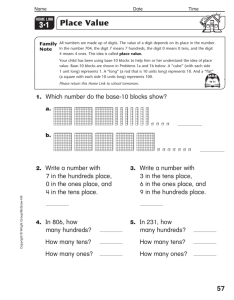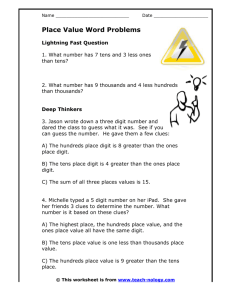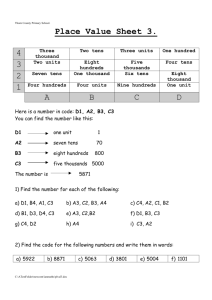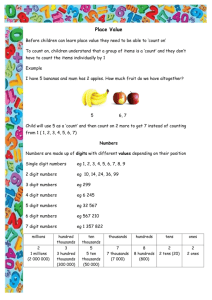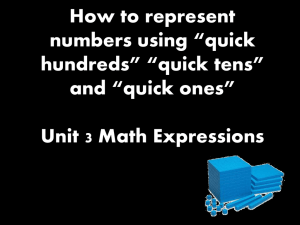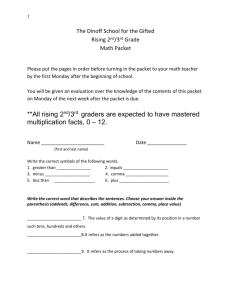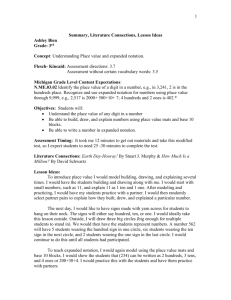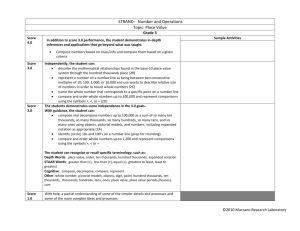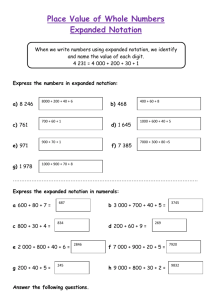Place Values and Rounding Whole Numbers
advertisement
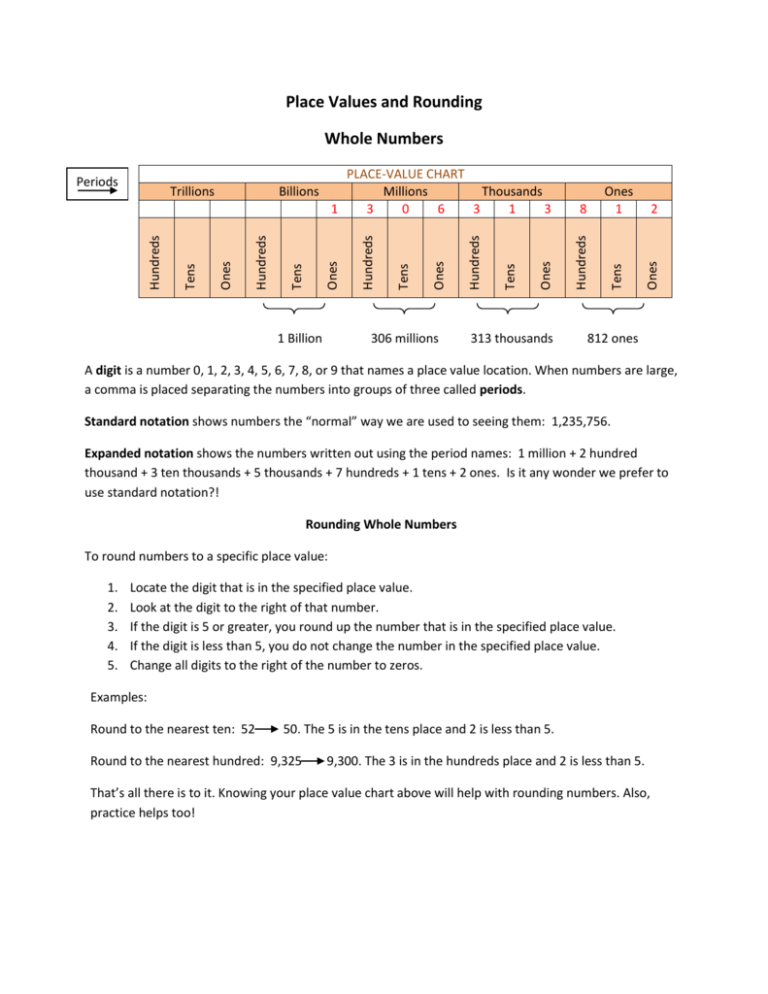
Place Values and Rounding 1 Billion 306 millions 313 thousands Ones 1 2 Ones 8 Hundreds Ones Tens Hundreds Ones Tens Hundreds Hundreds Ones Tens Hundreds Trillions Ones PLACE-VALUE CHART Billions Millions Thousands 1 3 0 6 3 1 3 Tens Periods Tens Whole Numbers 812 ones A digit is a number 0, 1, 2, 3, 4, 5, 6, 7, 8, or 9 that names a place value location. When numbers are large, a comma is placed separating the numbers into groups of three called periods. Standard notation shows numbers the “normal” way we are used to seeing them: 1,235,756. Expanded notation shows the numbers written out using the period names: 1 million + 2 hundred thousand + 3 ten thousands + 5 thousands + 7 hundreds + 1 tens + 2 ones. Is it any wonder we prefer to use standard notation?! Rounding Whole Numbers To round numbers to a specific place value: 1. 2. 3. 4. 5. Locate the digit that is in the specified place value. Look at the digit to the right of that number. If the digit is 5 or greater, you round up the number that is in the specified place value. If the digit is less than 5, you do not change the number in the specified place value. Change all digits to the right of the number to zeros. Examples: Round to the nearest ten: 52 50. The 5 is in the tens place and 2 is less than 5. Round to the nearest hundred: 9,325 9,300. The 3 is in the hundreds place and 2 is less than 5. That’s all there is to it. Knowing your place value chart above will help with rounding numbers. Also, practice helps too!

